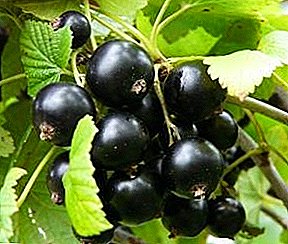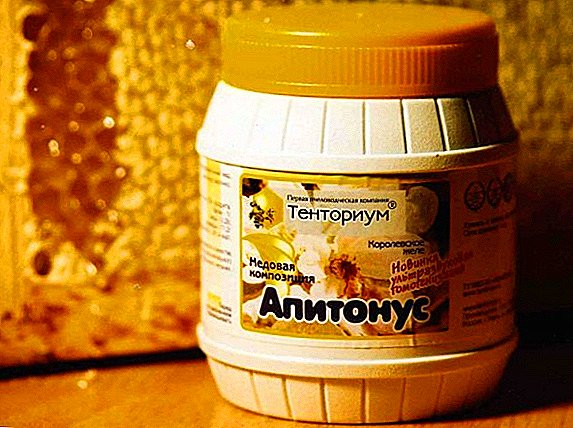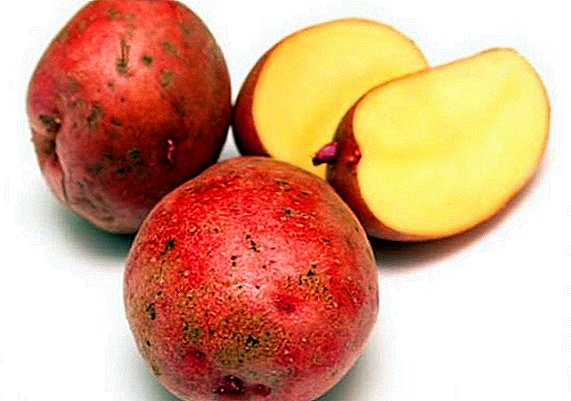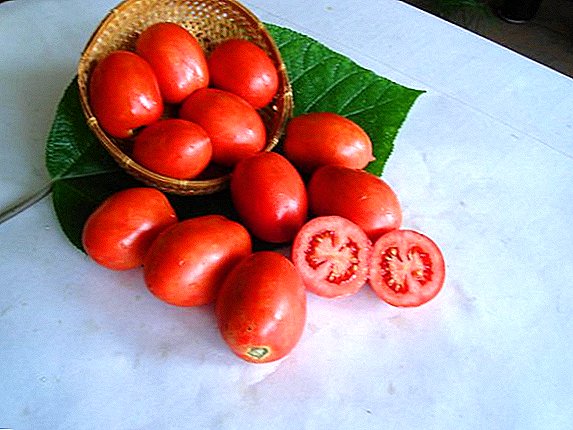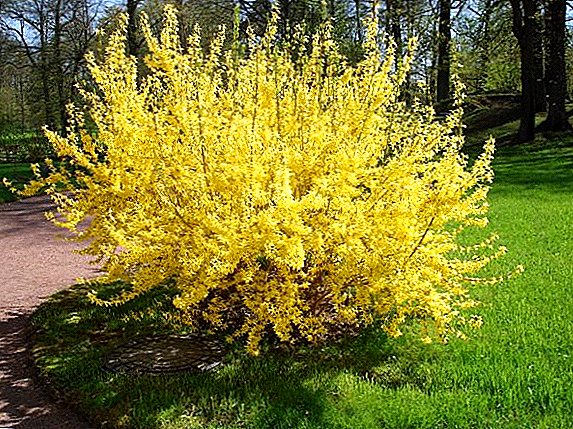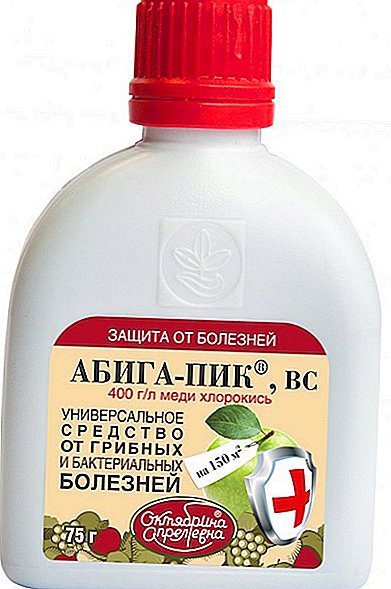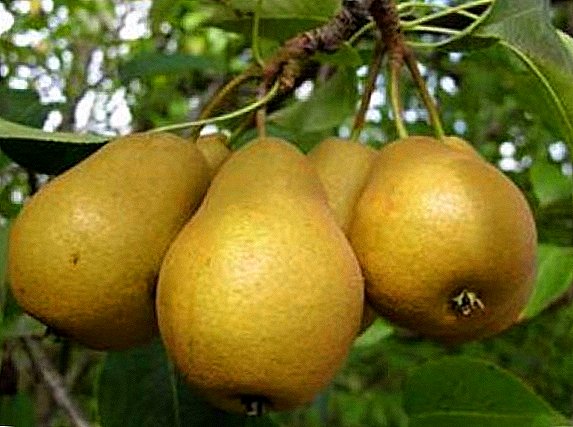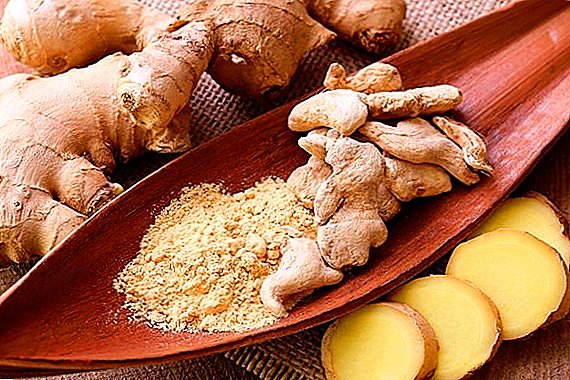 Many have heard of such a culture as physalis. Unusual red boxes, lanterns, in which the fruits of the plant are hiding - the first thing you remember. when they talk about Physalis. It belongs to the family of the nightshade. This perennial plant reaches up to 50-100 cm in height, produces single bell-shaped flowers of cream or white color, which grow from the axils of the leaves and bloom in August. The spherical fruit of red or orange color is inside the bubble cup. Hence the name of the plant: in Greek "physio" means bloated.
Many have heard of such a culture as physalis. Unusual red boxes, lanterns, in which the fruits of the plant are hiding - the first thing you remember. when they talk about Physalis. It belongs to the family of the nightshade. This perennial plant reaches up to 50-100 cm in height, produces single bell-shaped flowers of cream or white color, which grow from the axils of the leaves and bloom in August. The spherical fruit of red or orange color is inside the bubble cup. Hence the name of the plant: in Greek "physio" means bloated.
The fruit ripens in September - October. Branched underground shoots creeping plants. Physalis grows in ravines, on forest edges, near shrubs, in light forests. It is widespread in Central Asia, in the Caucasus, in the Baltic States, the Russian Federation, Iraq, and Bulgaria. Its medicinal properties are widely known. However, not every fruit is suitable for food and treatment. Therefore, we will further examine in more detail what physalis is and how it is eaten.
Did you know? Physalis stillcalled marionka, pepey cherry, bubble.
The composition of Physalis, what is the healing plant
 Acquainted with physalis, knowing what it is, let's see what is so attractive plant, in addition to its external beauty? Its value is the fruit, which for 10% consists of dry substances, including seeds. 15% of the latter are oily substances. In addition, 2.5% of the fruit is proteins, 4.5% - sugars, 0.7-1.4% organic acids (malic, tartaric, succinic, citric), 0.45% of pectin and other gelling agents, 0, 1% carotene, 45-100 mg of ascorbic acid, as well as volatile production, minerals, fizalin.
Acquainted with physalis, knowing what it is, let's see what is so attractive plant, in addition to its external beauty? Its value is the fruit, which for 10% consists of dry substances, including seeds. 15% of the latter are oily substances. In addition, 2.5% of the fruit is proteins, 4.5% - sugars, 0.7-1.4% organic acids (malic, tartaric, succinic, citric), 0.45% of pectin and other gelling agents, 0, 1% carotene, 45-100 mg of ascorbic acid, as well as volatile production, minerals, fizalin.
The berries contain such trace elements:
- zinc, which is part of the cell membranes of our body;
- sodium, which plays a major role in water-salt metabolism;
- calcium, one of the main elements of bone tissue;
- iron, which is involved in blood formation;
- magnesium, which provides all metabolic processes;
- phosphorus, which ensures the normal functioning of the nervous system, forms the skeleton, takes part in metabolism;
- potassium, which ensures the normal functioning of the cardiovascular system.
Important! Most often at the mention of Physalis, people imagine drop-shaped fragile boxes, inside of which is a small red fruit. But this is only "Fourche" - the most common type of decorative Physalis, which has a bitter taste and is not fit for human consumption. For this there are vegetable and berry variety of culture. Berry from vegetable differs in greater sweetness, but it is less often used as a medicinal plant.
Medicinal properties of Physalis, when to use the fruit
 Now let's figure out what they use Physalis. Primarily for therapeutic purposes: in the treatment of urinary tract, respiratory system, rheumatism, herpes, gout and other diseases. It is valued for its analgesic, antiseptic, hemostatic, choleretic, diuretic properties.
Now let's figure out what they use Physalis. Primarily for therapeutic purposes: in the treatment of urinary tract, respiratory system, rheumatism, herpes, gout and other diseases. It is valued for its analgesic, antiseptic, hemostatic, choleretic, diuretic properties.
As a remedy, the roots and fruits of the plant are used. They are mined and dried in the fall, but the fruits are more often used raw. To do this, they must first be doused with boiling water so that a sticky wax-like coating will come off. The fruits have a sweet and sour taste with a slight bitterness. They are added to soups, canned mixed vegetables, salads. Accordingly, when asked whether physalis can be eaten raw, the answer is in the affirmative. Use them also for the preparation of second courses, caviar. Fresh fruits are crushed with juices, boiled jam, dried and dried.
How is physalis for men useful?
The plant is valued for its special effect on the male body. Thus, over the years, this category of the population increases the risk of the appearance of urogenital diseases. Physalis has beneficial properties of an anti-inflammatory and diuretic nature, which have an excellent preventive effect for men. The advantage of the plant is that it has practically no contraindications, and it can often be used as food.
Physalis benefits for the female body
 The plant has a special positive effect on the female body. For example, a decoction of its roots is recommended for use in violations of the menstrual cycle. Since the fetus itself has diuretic, antiseptic and anti-inflammatory properties, it is recommended for the treatment of inflammation in the female genital organs, as well as for cystitis, pyelonephritis, urolithiasis. Knowing which physalis is good for health, it can be used all the time, since it is a low-calorie and dietary vegetable or berry. By the way, berry-based ointment is used as a healing external agent.
The plant has a special positive effect on the female body. For example, a decoction of its roots is recommended for use in violations of the menstrual cycle. Since the fetus itself has diuretic, antiseptic and anti-inflammatory properties, it is recommended for the treatment of inflammation in the female genital organs, as well as for cystitis, pyelonephritis, urolithiasis. Knowing which physalis is good for health, it can be used all the time, since it is a low-calorie and dietary vegetable or berry. By the way, berry-based ointment is used as a healing external agent.
The use of Physalis in traditional medicine, the best recipes
The beneficial properties of Physalis have long been known. Avicenna also recommended its use for the treatment of ulcers and asthma. Not surprisingly, popular recipes for the use of plants in the treatment have survived to this day.
Did you know? The legend of Physalis says that once the sun swallowed a huge dragon. The world plunged into darkness, and everything began to die. But there was a brave young man who took the flashlight and went in search of the monster. Having found the dragon, he defeated him and freed the sun. It spread bright light and for a second blinded the young man. He quickly covered his eyes with his hand and dropped the lantern. He hit the ground and turned into a whole scattering of small lanterns. From them physalis has grown all over the world.
With anemia and hypertension
The shamans of Central Asia knew the beneficial properties of physalisis and used the plant to treat hypertension, anemia, and senile constipation. In the latter two cases, the fresh fruit of the plant gives an excellent effect. They are recommended to use 2-3 times a day before meals for 5-10 pieces. Hypertension treats tea based on the covers of the fruits and leaves of the plant.
Broth for diseases of the stomach
 A decoction of the fruits of Physalis, as a means to combat gastric diseases was used mainly in Bulgaria. They treated with a decoction not only gastrointestinal colic, but also hemorrhages, jaundice, gout, rheumatism, cholecystitis. It perfectly helps in the treatment of hemorrhoids and as a diuretic.
A decoction of the fruits of Physalis, as a means to combat gastric diseases was used mainly in Bulgaria. They treated with a decoction not only gastrointestinal colic, but also hemorrhages, jaundice, gout, rheumatism, cholecystitis. It perfectly helps in the treatment of hemorrhoids and as a diuretic.
To prepare the broth, take half a gallon of water to take 20 g of fresh or dried fruit and boil them for 10-15 minutes. Then the broth insist until it cools. Strain, take a quarter glass 4-5 times a day.
Today, the fruits are recommended for the treatment of duodenal ulcer and stomach, hypoacid gastritis, diabetes mellitus, chronic cholecystitis. Small ripe fruits are taken in the amount of 10-15 pieces, larger ones - 4-8.
Important! If you have high acidity, the rate of consumption of fresh fruit should be halved. They should be eaten immediately before a meal, each time slightly increasing the dose. Always focus on your well-being. The maximum allowable amount of 8-15 pieces, depending on the size of the berries.
Boiled juice against angina and stomatitis
For these purposes, Physalis is used in Tajikistan, from which the treatment prescription came. It is recommended to grind the fruits of Physalis in mush or squeeze juice from them. Boil the resulting mixture over low heat with the addition of milk. Then cooked remedy give 3-4 Art. spoon 3-4 times a day for 4-5 days. During this time, stomatitis, tonsillitis and laryngitis are completely cured. If you take the mixture periodically, you can avoid recurrence of the disease.
Are dried berries useful?
 Dried Physalis is also used in food. You can eat both the dried berries themselves, and a decoction of them. They also have beneficial properties, curing various inflammatory diseases of the upper respiratory tract, including influenza, bronchitis, and the common cold.
Dried Physalis is also used in food. You can eat both the dried berries themselves, and a decoction of them. They also have beneficial properties, curing various inflammatory diseases of the upper respiratory tract, including influenza, bronchitis, and the common cold.
Are there any contraindications
Many are concerned about the question of whether there are contraindications for the use of Physalis. Traditionally, it is not recommended for pregnant women and nursing mothers. Physalis berry, in addition to its benefits, can also bring harm to the body with people with high acidity. They can use the berries several pieces at a time, gradually increasing their number.
Since the terrestrial parts of the plant contain feselin and alkaloids, before using the plant, it is necessary to consult a doctor.
The rest of Physalis - a useful plant. It can not only decorate your garden or vegetable garden, but also have a positive effect on the body. It is only important not to use decorative varieties of culture for food.


